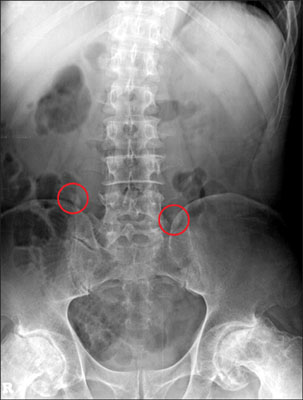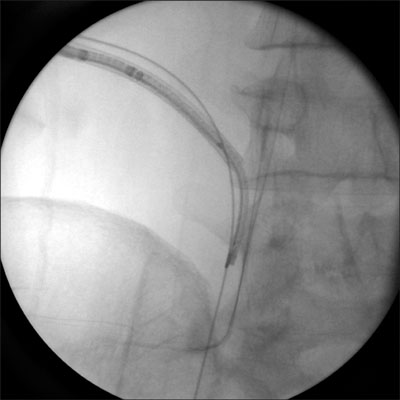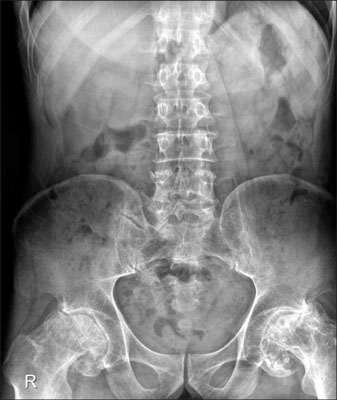Korean J Urol.
2010 Nov;51(11):800-802.
Antegrade Flexible Ureteroscopy for Bilateral Ureteral Stones in a Patient with Severe Hip Joint Ankylosis
- Affiliations
-
- 1Department of Urology, Kyungpook National University School of Medicine, Daegu, Korea. doctork@knu.ac.kr
Abstract
- In the past several decades there has been a remarkable development of small-caliber, flexible ureteroscopes and various ancillary instruments for stone manipulation and retrieval. Percutaneous antegrade ureteroscopy can be substituted in select cases for retrograde ureteroscopy. We report a case of a 60-year-old man with severe ankylosis in both hip joints who was diagnosed with bilateral ureteral stones. The patient underwent antegrade flexible ureteroscopy and laser lithotripsy. This case illustrates the role of antegrade flexible ureteroscopy combined with the holmium:YAG laser as a minimally invasive, safe, and effective technique for the management of stones in a patient who cannot undergo a retrograde approach.
Keyword
MeSH Terms
Figure
Reference
-
1. Preminger GM, Tiselius HG, Assimos DG, Alken P, Buck AC, Gallucci M, et al. 2007 Guideline for the management of ureteral calculi. Eur Urol. 2007. 52:1610–1631.2. El-Assmy A, El-Nahas AR, Mohsen T, Eraky I, El-Kenawy MR, Shaban AA, et al. Extracorporeal shock wave lithotripsy of upper urinary tract calculi in patients with cystectomy and urinary diversion. Urology. 2005. 66:510–513.3. el-Nahas AR, Eraky I, el-Assmy AM, Shoma AM, el-Kenawy MR, Abdel-Latif M, et al. Percutaneous treatment of large upper tract stones after urinary diversion. Urology. 2006. 68:500–504.4. Rhee BK, Bretan PN Jr, Stoller ML. Urolithiasis in renal and combined pancreas/renal transplant recipients. J Urol. 1999. 161:1458–1462.5. Gupta PK. Is the holmium:YAG laser the best intracorporeal lithotripter for the ureter? A 3-year retrospective study. J Endourol. 2007. 21:305–309.6. Wolf JS Jr. Treatment selection and outcomes: ureteral calculi. Urol Clin North Am. 2007. 34:421–430.7. Kumar V, Ahlawat R, Banjeree GK, Bhaduria RP, Elhence A, Bhandari M. Percutaneous ureterolitholapaxy: the best bet to clear large bulk impacted upper ureteral calculi. Arch Esp Urol. 1996. 49:86–91.8. Goel R, Aron M, Kesarwani PK, Dogra PN, Hemal AK, Gupta NP. Percutaneous antegrade removal of impacted upper-ureteral calculi: still the treatment of choice in developing countries. J Endourol. 2005. 19:54–57.
- Full Text Links
- Actions
-
Cited
- CITED
-
- Close
- Share
- Similar articles
-
- Clinical Experience with Ureteroscopic Management of Ureteral Calculi Including Electrohydraulic Lithotripsy
- Ureteroscopic stone removal
- Treatment of Ureteral Stone Using Ureteroscopy
- Ureteroscopic Removal of Ureter Stone
- The Management of Ureteral Calculi with the Ureteroscopy: Failure Cases and Complications





